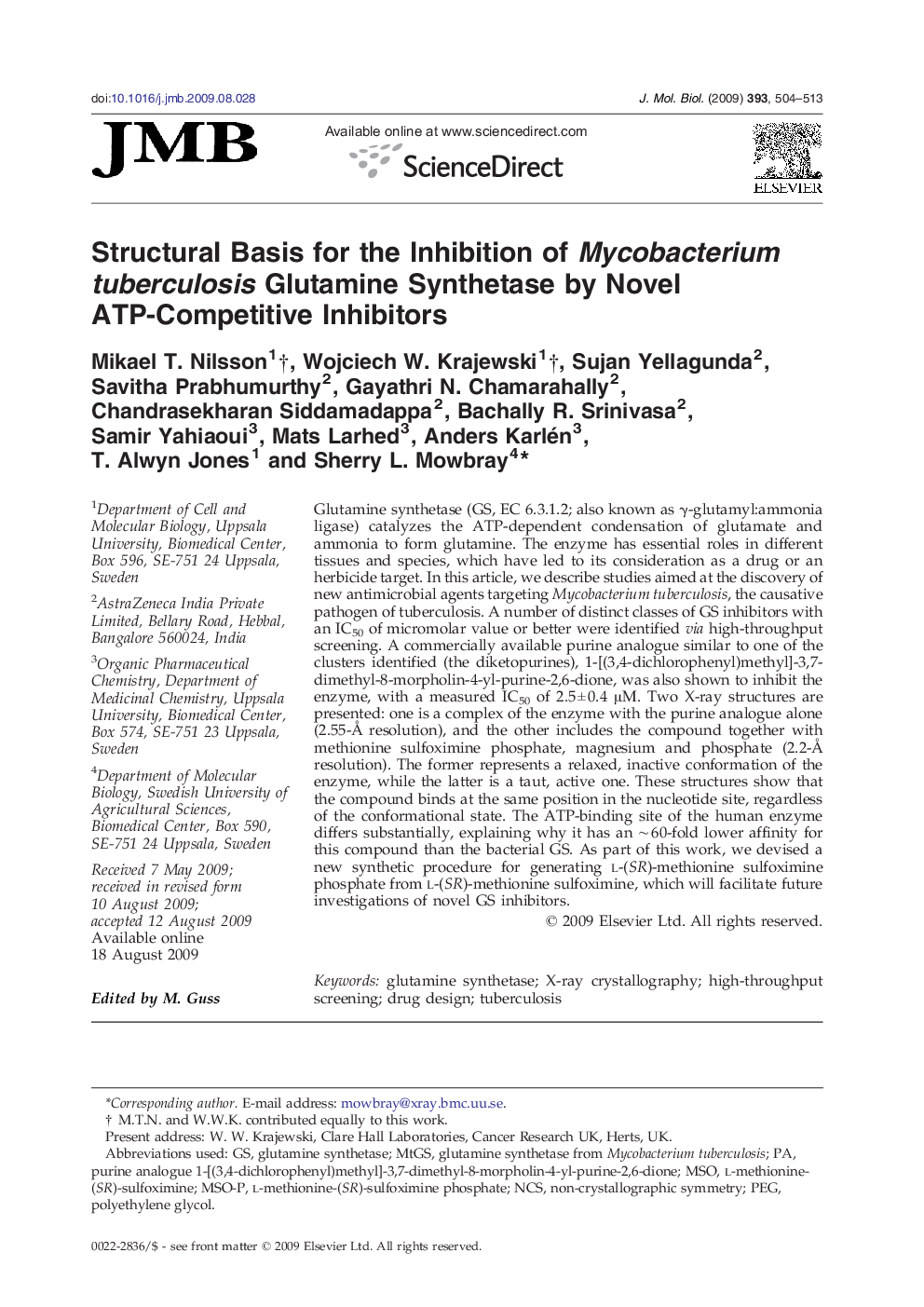| Article ID | Journal | Published Year | Pages | File Type |
|---|---|---|---|---|
| 2186213 | Journal of Molecular Biology | 2009 | 10 Pages |
Glutamine synthetase (GS, EC 6.3.1.2; also known as γ-glutamyl:ammonia ligase) catalyzes the ATP-dependent condensation of glutamate and ammonia to form glutamine. The enzyme has essential roles in different tissues and species, which have led to its consideration as a drug or an herbicide target. In this article, we describe studies aimed at the discovery of new antimicrobial agents targeting Mycobacterium tuberculosis, the causative pathogen of tuberculosis. A number of distinct classes of GS inhibitors with an IC50 of micromolar value or better were identified via high-throughput screening. A commercially available purine analogue similar to one of the clusters identified (the diketopurines), 1-[(3,4-dichlorophenyl)methyl]-3,7-dimethyl-8-morpholin-4-yl-purine-2,6-dione, was also shown to inhibit the enzyme, with a measured IC50 of 2.5 ± 0.4 μM. Two X-ray structures are presented: one is a complex of the enzyme with the purine analogue alone (2.55-Å resolution), and the other includes the compound together with methionine sulfoximine phosphate, magnesium and phosphate (2.2-Å resolution). The former represents a relaxed, inactive conformation of the enzyme, while the latter is a taut, active one. These structures show that the compound binds at the same position in the nucleotide site, regardless of the conformational state. The ATP-binding site of the human enzyme differs substantially, explaining why it has an ∼ 60-fold lower affinity for this compound than the bacterial GS. As part of this work, we devised a new synthetic procedure for generating l-(SR)-methionine sulfoximine phosphate from l-(SR)-methionine sulfoximine, which will facilitate future investigations of novel GS inhibitors.
